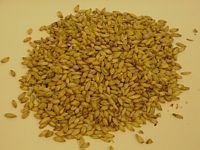m (added link to the malts chart) |
|||
| Line 4: | Line 4: | ||
Malting is the controlled [http://en.wikipedia.org/wiki/Germination germination] of cereals, followed by a termination of this natural process by the application of heat. Further heat is then applied to '[[kiln]]' the grain and produce the required flavour and colour. A basic rule is that for malt to be made, the barley must be capable of germination, so [[maltsters]]' source their barley with a minimum germination of 98%. By far the largest use of malt is for brewing then distilling followed by food production. | Malting is the controlled [http://en.wikipedia.org/wiki/Germination germination] of cereals, followed by a termination of this natural process by the application of heat. Further heat is then applied to '[[kiln]]' the grain and produce the required flavour and colour. A basic rule is that for malt to be made, the barley must be capable of germination, so [[maltsters]]' source their barley with a minimum germination of 98%. By far the largest use of malt is for brewing then distilling followed by food production. | ||
| + | |||
''' Compare various malts with the [[Malts Chart|malts chart]]. ''' | ''' Compare various malts with the [[Malts Chart|malts chart]]. ''' | ||
<div style="clear:both;"></div> | <div style="clear:both;"></div> | ||
| − | + | ---- | |
| − | |||
Revision as of 03:22, 30 March 2007
What Is Malt?
Malting is the controlled germination of cereals, followed by a termination of this natural process by the application of heat. Further heat is then applied to 'kiln' the grain and produce the required flavour and colour. A basic rule is that for malt to be made, the barley must be capable of germination, so maltsters' source their barley with a minimum germination of 98%. By far the largest use of malt is for brewing then distilling followed by food production.
Compare various malts with the malts chart.

